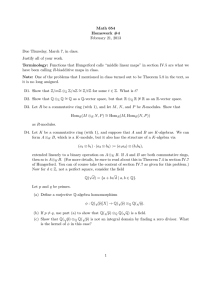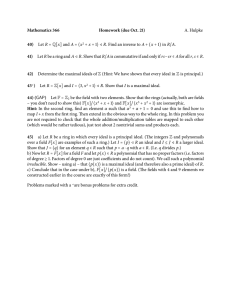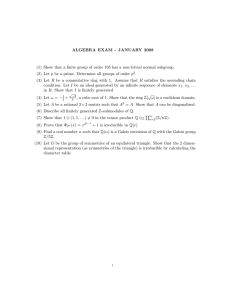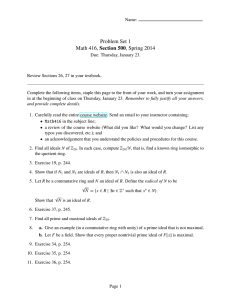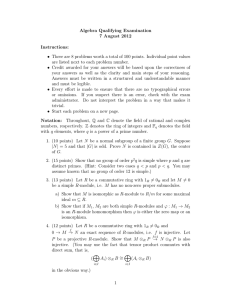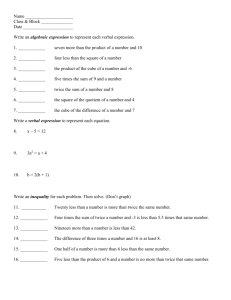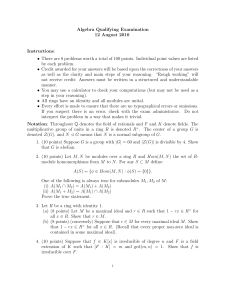ALGEBRA PRELIMINARY EXAMINATION (1) Let n ≥ 3 be a natural
advertisement
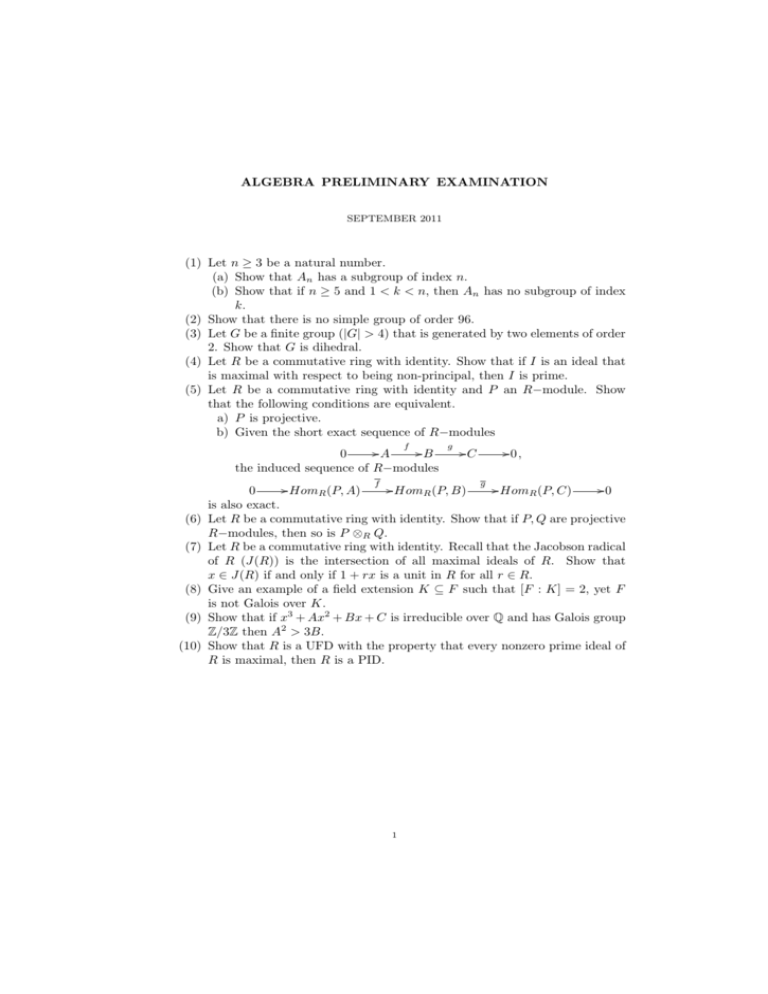
ALGEBRA PRELIMINARY EXAMINATION SEPTEMBER 2011 (1) Let n ≥ 3 be a natural number. (a) Show that An has a subgroup of index n. (b) Show that if n ≥ 5 and 1 < k < n, then An has no subgroup of index k. (2) Show that there is no simple group of order 96. (3) Let G be a finite group (|G| > 4) that is generated by two elements of order 2. Show that G is dihedral. (4) Let R be a commutative ring with identity. Show that if I is an ideal that is maximal with respect to being non-principal, then I is prime. (5) Let R be a commutative ring with identity and P an R−module. Show that the following conditions are equivalent. a) P is projective. b) Given the short exact sequence of R−modules /A f /B 0 the induced sequence of R−modules (6) (7) (8) (9) (10) g /C /0, /0 / HomR (P, A) f / HomR (P, B) g / HomR (P, C) 0 is also exact. Let R be a commutative ring with identity. Show that if P, Q are projective R−modules, then so is P ⊗R Q. Let R be a commutative ring with identity. Recall that the Jacobson radical of R (J(R)) is the intersection of all maximal ideals of R. Show that x ∈ J(R) if and only if 1 + rx is a unit in R for all r ∈ R. Give an example of a field extension K ⊆ F such that [F : K] = 2, yet F is not Galois over K. Show that if x3 + Ax2 + Bx + C is irreducible over Q and has Galois group Z/3Z then A2 > 3B. Show that R is a UFD with the property that every nonzero prime ideal of R is maximal, then R is a PID. 1

